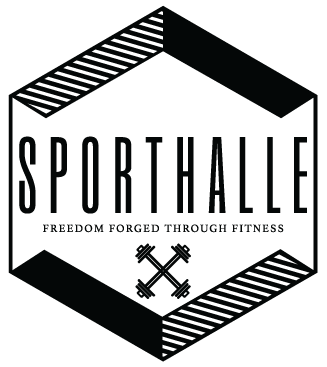The Crucial Role of Bracing: A Guide to Safer and More Effective Workouts
“BRACE!”
I’m sure you’ve heard your coach yell that a time or two. Or maybe the coach asked if you were bracing when you lifted a weight that didn’t feel so great.
Bracing is immensely important in CrossFit. When lifting heavy weights or moving moderate weights quickly, bracing is essential to keeping you safe and moving efficiently. Bracing is not just a technicality; it’s the foundation of safe and effective movement. Here we delve into the importance of bracing and how mastering this technique can elevate your workouts to new heights.
Understanding Bracing:
Bracing refers to the process of tightening and stabilizing the core muscles to provide support and protect the spine during movements in CrossFit, especially weightlifting. While it may seem like a simple concept, proper bracing involves activating multiple muscle groups, including the abdominals, obliques, and lower back, to create a solid foundation for lifting.
The Importance of Bracing:
- Injury Prevention: One of the primary reasons bracing is essential in weightlifting is injury prevention. When lifting heavy weights, the spine is vulnerable to injury if not adequately supported. By engaging the core muscles and maintaining proper alignment, bracing helps distribute the load evenly, reducing the risk of strains, sprains, and other injuries.
- Enhanced Performance: Bracing isn’t just about protecting against injury; it also plays a vital role in enhancing performance. A stable core allows for greater force production and transfer, enabling you to lift heavier weights with improved technique. By bracing effectively, you can maximize the efficiency of your movements and achieve better results in your workouts.
- Improved Technique: Proper bracing goes hand in hand with good lifting technique. When you brace correctly, you create a solid base of support that allows you to maintain proper alignment throughout the lift. This, in turn, helps you execute each movement with precision and control, reducing the risk of compensatory movements or poor form.
- Core Strength Development: Consistently incorporating bracing into your workouts can also lead to significant improvements in core strength. As you engage the muscles to stabilize your spine, you’re effectively strengthening the entire core, including the abdominals, obliques, and lower back. Over time, this can translate to better posture, balance, and overall functional strength.
Tips for Effective Bracing:
- Engage the entire core: Focus on activating not just the front abdominals but also the muscles along the sides and lower back.
- Breathe properly: While bracing, remember to maintain diaphragmatic breathing by inhaling deeply into the belly and exhaling forcefully to create intra-abdominal pressure.
- Practice regularly: Like any skill, mastering bracing requires practice. Incorporate bracing drills into your warm-up routine and focus on maintaining proper form during your workouts.
- Seek guidance: If you’re unsure about your bracing technique, consider working with a certified personal trainer or strength coach who can provide guidance and feedback.
In the excitement of the gym, bracing can often be overlooked but is undeniably essential. By prioritizing proper bracing technique, you can not only reduce the risk of injury but also improve your performance, technique, and core strength. Whether you’re a seasoned CrossFitter or just starting out, taking the time to master bracing will undoubtedly pay off in the long run, helping you achieve your fitness goals safely and effectively. So, the next time you hit the gym, remember to brace yourself for success!
The post The Crucial Role of Bracing: A Guide to Safer and More Effective Workouts appeared first on Sporthalle - New Braunfels.


